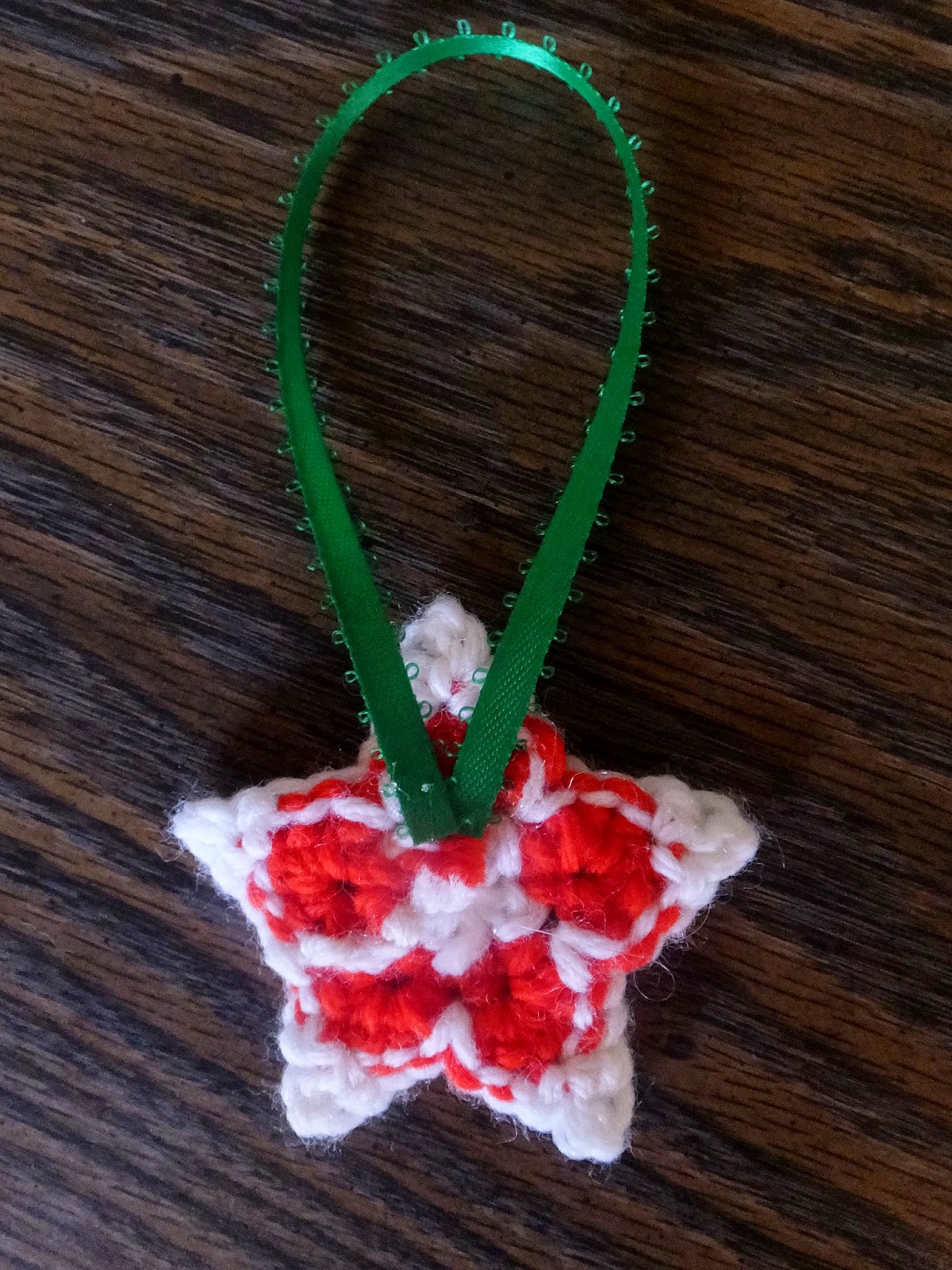Hello, and welcome to the bloggercized version of
Strung Out Fiber Arts! I am an avid crocheter and knitter (though my primary
craft is crochet) and have been selling my finished products and a few patterns on
Etsy since 2011. I hope this blog will be a place for me to share my experiments
(successes and failures) and the overall process of turning a ball of yarn into
a fun finished product.
With no further introduction, (drum roll please),
my very first blog post will be...a free knitting pattern. Hurray!
This is an extremely simple pattern—so simple I'm not sure it even qualifies
as a pattern—but it's fun to make and beautiful to wear, so I think it’s worth
sharing.
Mesh Mobius Cowl
Materials:
1 skein of Knit Picks Palette in Cream
Size 7 straight needles
Gauge is not crucial for this piece. Palette is a fingering weight yarn and
the needles I’ve chosen are several sizes larger than recommended, which makes
the mesh effect more pronounced. Even larger needles will create a looser,
lacier effect, while smaller needles will create a denser pattern.
My gauge was approximately 10 stitches and 12
rows for a 2” square after blocking.
This cowl is worked flat and bound off to join into a mobius ring.
CO 70 sts.
Row 1: k1, *yo, k2tog.* End k1. Repeat directions between asterisks.

That’s it. That’s the only row of the pattern. It’s the same on both sides
so it creates a perfectly reversible fabric. Just keep on knitting until you
run out of yarn or decide your cowl is long enough, making sure to leave enough
yarn to bind off. A couple yards should do the trick.
There are many ways this simple pattern can be varied—fewer stitches cast on
for a slimmer, longer infinity scarf, using an additional skein to make one
long piece to wear as a traditional scarf, joining in a circle, or as I’ve
done, adding a half twist and joining into a mobius cowl.
Finishing:
This is where it gets a little wacky. I actually first bound off my piece,
seamed it together, hated how it looked, and ripped out the seam and
bind off row.
I don’t recommend this.
Instead, I found that a sort of modified three
needle bind off brings it together much more nicely. (More on this below.)
I’d advise attempting some light blocking with the piece still on the
needles. I blocked mine somewhere between binding off and then ripping it back
out, so I don’t know how well blocking on the needles will work. But it’s going to be pretty impossible to block with your cowl sewn up
into a mobius strip, so give it a try.
Blocking is totally worth it for this stitch pattern and yarn. If you’re
like me, and often make items using acrylic yarn that don’t necessitate
blocking, like
tiny Cinderella wigs, it’s easy to imagine it doesn’t make a
difference. But this is wool, and this is lace, and it totally does.
Before blocking, my piece measured 12” x 23” and afterwards it measured 15”
x 27.” That’s how much the lace opens up with a little treatment. It’s kinda
cool, actually. The result is a rectangle of soft, airy delight
To bind off and seam the cowl at the same time (yay!) you need to give the
cowl a half twist so the needle edge lines up with the cast on edge.
To do this, lay the piece out flat and bring the needle point to the
opposite corner of the cast on edge. I think of this as catercorner if you find that helpful.
Then, bring the end of the needle across to line up with the cast on edge.
Now for the fun part! If you’re familiar with three needle bind off, this is
quite similar, but instead of knitting together live stitches, you’ll be
knitting through one live stitch and picking up another from the cast on edge
to bind them together. No third needle necessary.
Insert your needle into the first stitch and through the first cast on
stitch of the opposite edge, and knit together.
Do this once more, and then
pass the first stitch over, binding off as you usually would.
This gives you a ridge on one side, as you might see on the wrong side of a
sweater.
And the other side is much cleaner looking than anything I was able to
achieve by seaming. With
no seaming!
The back is the front, the inside is the
outside. Science!
I find that the mobius-ness helps the cowl to lay nicely around the neck with little to no effort. With round cowls I tend to be unsure of how to arrange them, and the twist arranges itself for me.
Ta Daa!










.JPG)
.JPG)
.JPG)
.JPG)
.JPG)
.JPG)
.JPG)
.JPG)
.JPG)
.JPG)











